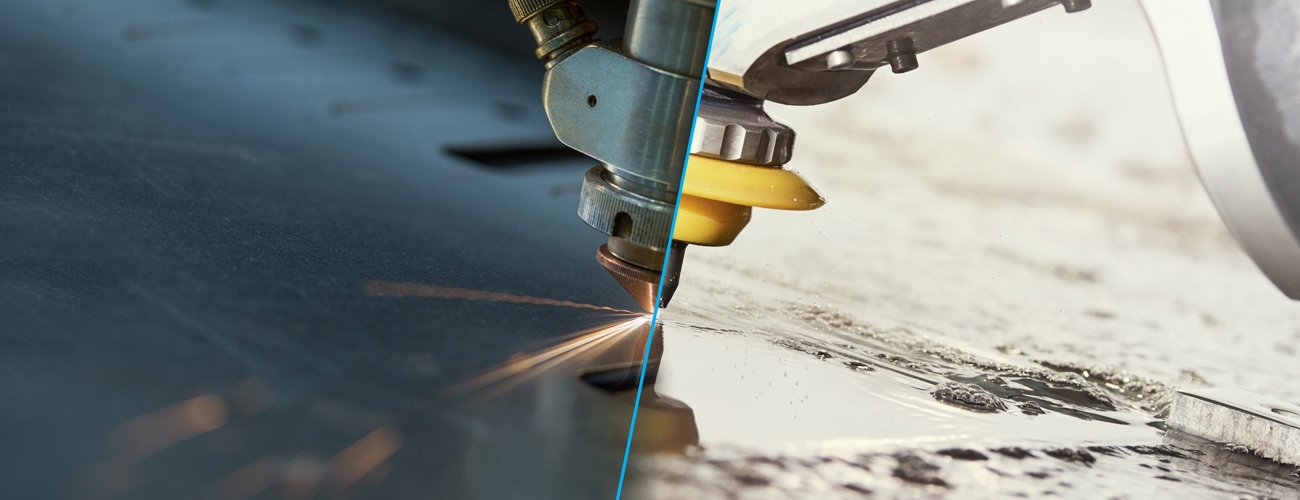
At first glance it might seem like there’s not a lot of difference between waterjet cutting and plasma cutting - they are both fine beams of matter projected at high speeds towards a sheet of material that needs to be cut into a certain shape, they both can be operated by Computer Numerical Control, and they can be used on a range of materials.
That being said there are some stark differences to consider if you are considering using either of these processes as part of your manufacturing process, and in certain cases you may find that one or the other may not be able to deliver the results you are looking for. We’ll explain key differences in this article, and if there you still have questions or ideas at the end we’ll leave a contact form so you can get in touch with us directly.
Value For Money
The obvious - and usually main - decision factor is cost. Although it might ‘sound’ expensive, plasma cutting actually offers better value for money when compared to water jet cutting in a variety of ways. The equipment generally tends to be cheaper when compared to comparable services (especially vs. laser cutting where machines can often surpass £1,000,000) and the operating and maintenance costs are also more favourable. This means that workshops are able to offer this service at a lower rate compared to similar processes.
Precision
This point goes squarely in the favour of waterjet cutting - the ability to fine tune the waterjet means that tolerances are pretty much as tight as it can get - the accuracy of this type of cutting is second to none. Plasma cutting on the other hand has tolerances of around +/-1.5mm so can’t be relied on for super technical cutting work, and therefore secondary operations are often required to gain that precision.
Endurance
Both of these cutting processes offer significant advantages when compared to metal cutting machines - retooling and blunting are obviously not factors when considering water and plasma cutting. Beyond that, it’s pretty much a coin toss on which is better based on specific circumstances related to individual projects, plasma cutting machines operate on large gas tanks that can be re-filled with virtually no downtime and the same is true for waterjet cutting. In terms of time, the main difference really comes down to the operating speed of the operations, which brings us to...
Turnaround
The operating speeds of each of these processes vary greatly. Waterjet cutting is much more precise, and negates the need for secondary operations, however the downside here is that the process takes much longer, especially as material thickness increases. Plasma Cutting is the outright winner here, even when compared to laser cutting.
Materials
When the thickness of the materials increase plasma jet can definitely hold its own, with most setups able to deal with metal thicknesses up to 80mm. However there are waterjet cutters out there that can cut 300mm thick steel plate, so if you need precision and serious depth and you are not in a rush, then waterjet cutting comes out on top. However for most practical purposes it’s fair to say that this is about equal.
In Summary
The requirements you have for your project will be the ultimate determining factor in your decision here. If precision is key then waterjet cutting is the only viable option of the 2. If precision is less of a factor then plasma jet cutting offers a quicker and cheaper solution than waterjet cutting.
Not quite sure what the best choice is for you? Then use the contact form below or email office@rmpproducts.co.uk to contact our friendly team, alternatively give us a call on 0121 505 3066.




